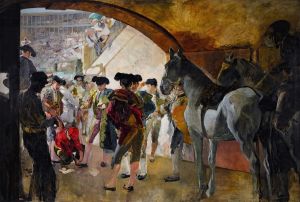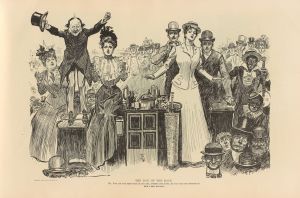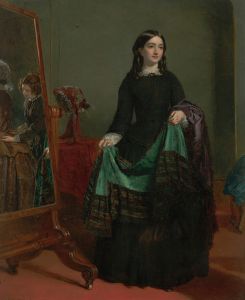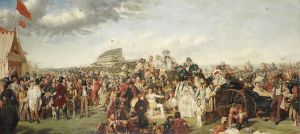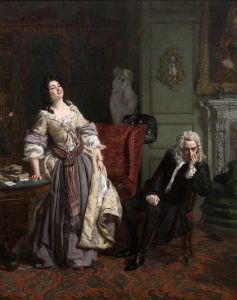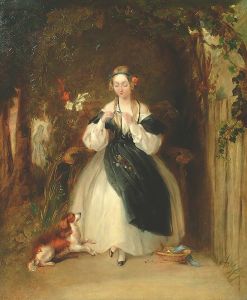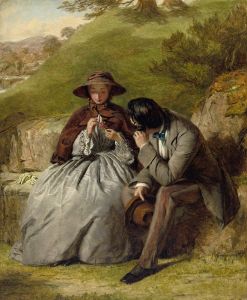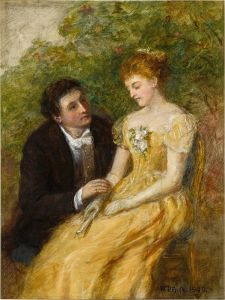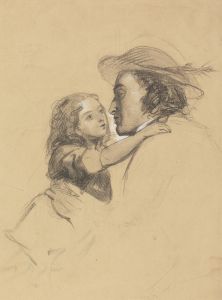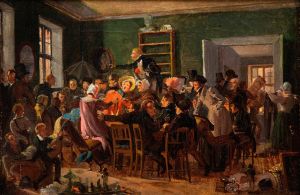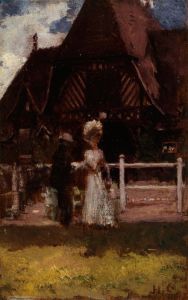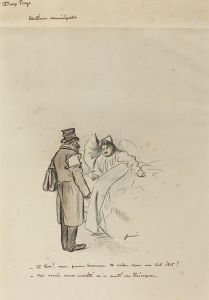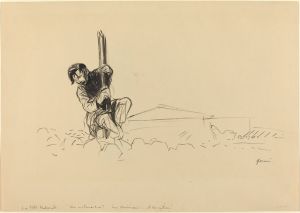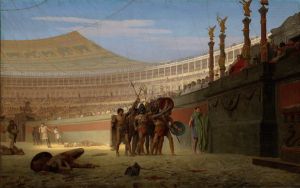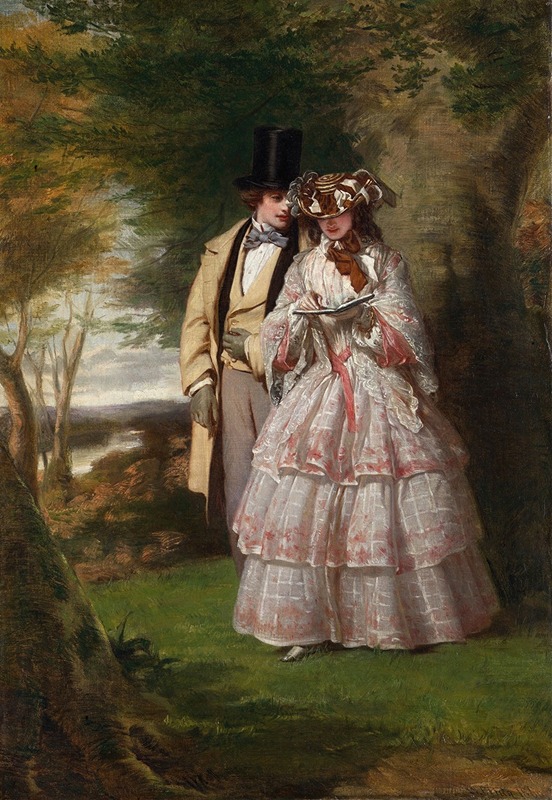
The Two Central Figures in Derby Day
A hand-painted replica of William Powell Frith’s masterpiece The Two Central Figures in Derby Day, meticulously crafted by professional artists to capture the true essence of the original. Each piece is created with museum-quality canvas and rare mineral pigments, carefully painted by experienced artists with delicate brushstrokes and rich, layered colors to perfectly recreate the texture of the original artwork. Unlike machine-printed reproductions, this hand-painted version brings the painting to life, infused with the artist’s emotions and skill in every stroke. Whether for personal collection or home decoration, it instantly elevates the artistic atmosphere of any space.
William Powell Frith's painting "The Derby Day," completed in 1858, is a celebrated work of Victorian art that captures the vibrant and bustling atmosphere of the Epsom Derby, one of the most prestigious horse racing events in England. The painting is renowned for its detailed depiction of a cross-section of Victorian society, showcasing a wide array of characters from different social classes gathered to enjoy the race day festivities.
"The Derby Day" is a large-scale oil painting that measures approximately 101.6 cm by 223.5 cm. It is housed in the Tate Britain in London. Frith, known for his narrative style and keen observation of social scenes, meticulously crafted this work to reflect the diversity and complexity of the event. The painting is divided into several distinct groups, each telling its own story, yet collectively contributing to the overall narrative of the day.
At the heart of the painting are two central figures, often considered to be emblematic of the social contrasts present at the Derby. These figures are a gentleman and a lady, who are positioned prominently in the composition. The gentleman is depicted as a well-dressed, affluent spectator, embodying the upper echelons of society. His attire and demeanor suggest wealth and privilege, characteristics that were often associated with the attendees of such high-profile events.
Beside him, the lady is portrayed with equal attention to detail, dressed in the fashionable attire of the time. Her presence alongside the gentleman highlights the social customs and gender dynamics of the Victorian era. The interaction between these two figures, though subtle, is indicative of the societal norms and expectations of the period, where public appearances and social status were of significant importance.
Surrounding these central figures are various other characters, each contributing to the lively and chaotic scene. Frith includes a range of individuals, from pickpockets and gamblers to families and vendors, all engaged in their own activities. This diversity not only adds depth to the painting but also serves as a social commentary on the different strata of Victorian society converging at a single event.
Frith's attention to detail and ability to capture the essence of the Derby Day experience have made this painting a quintessential example of Victorian genre painting. It reflects both the excitement of the event and the broader social dynamics of the time. "The Derby Day" remains a significant work in the history of British art, offering viewers a glimpse into the past and the vibrant life of 19th-century England.
In summary, William Powell Frith's "The Derby Day" is a masterful representation of Victorian society, with its central figures symbolizing the social contrasts of the era. The painting's intricate details and narrative depth continue to captivate audiences, making it a timeless piece in the canon of British art.





